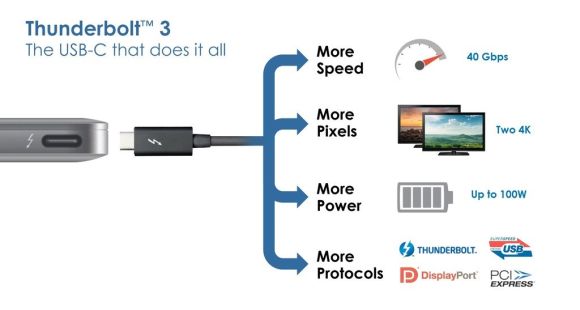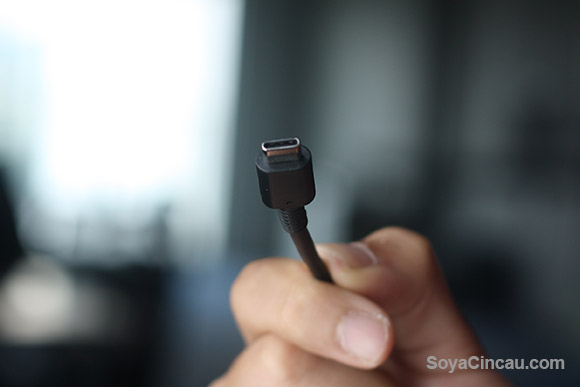Looks like adoption of the most up-to-date port, is going to be fast-tracked now; since it keeps getting better and better, yet it still hasn’t reached mass appeal. Captivating tech folks since coming into existence, the USB Type-C port is almost an all-in-one cable/head solution – beam pixels your display, transfer your data and charge up your power-hungry devices. So how does Thunderbolt 3 come into play?

Well, utilisation of USB Type-C protocols and Thunderbolt 3 technology will in theory allow data transfers up to 40Gbps (giga bits per second), doubling what we’ve seen on Thunderbolt 2 ports, and quadrupling speeds on USB 3.1. That roughly translates to an uncompressed RAW 4K video (1 hour long) sizing in at 158.2GB transferring around 30 seconds – working out to 5GBps.
Talking about driving pixels on screen, it’ll also be capable of displaying two 4K-resolution screens up to a 60Hz refresh rate at the same time and quicken charging for notebooks up to 100 watts.

Setting a platform for other types of protocols like DisplayPort, Super Speed USB and PCIExpress, Intel will bank on Thunderbolt to gain traction, as it hasn’t really caught on for most users; except those tech-centric folks out there needing more from their ports.
Already realised on smartphones like the OnePlus Two (but don’t use their cables, read about that here), Xiaomi’s Mi 4c, Lumia 950 series, latest Nexuses, PCs and tablets, we hope that USB Type-C catches on quickly. But then again, what about all our old cables and plugs?







